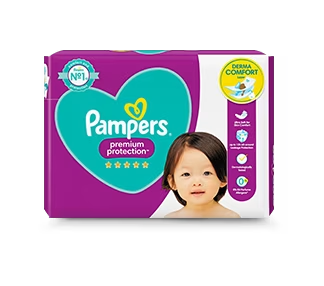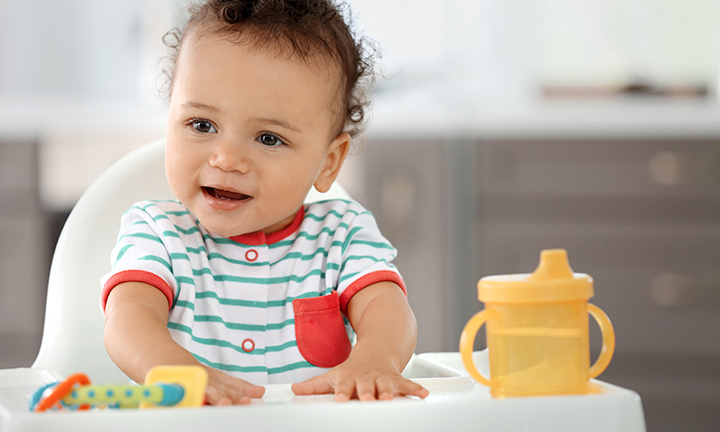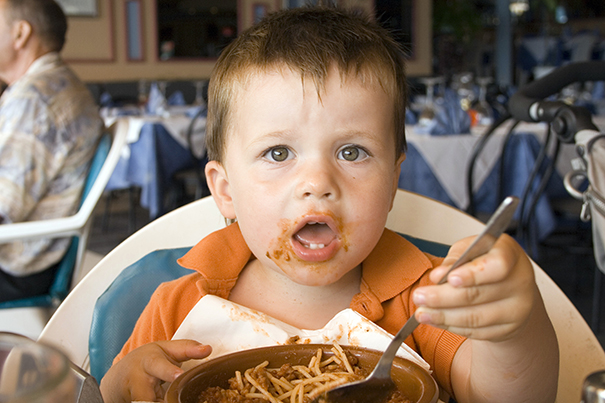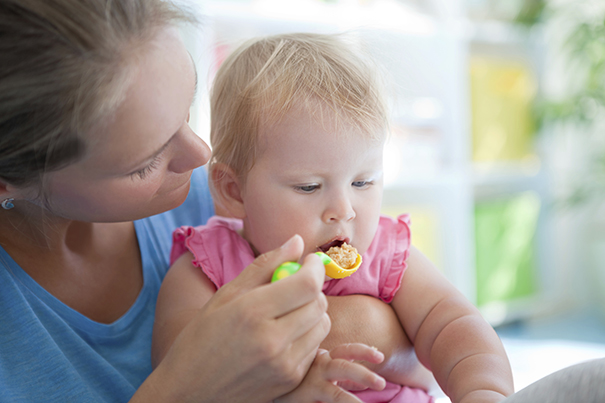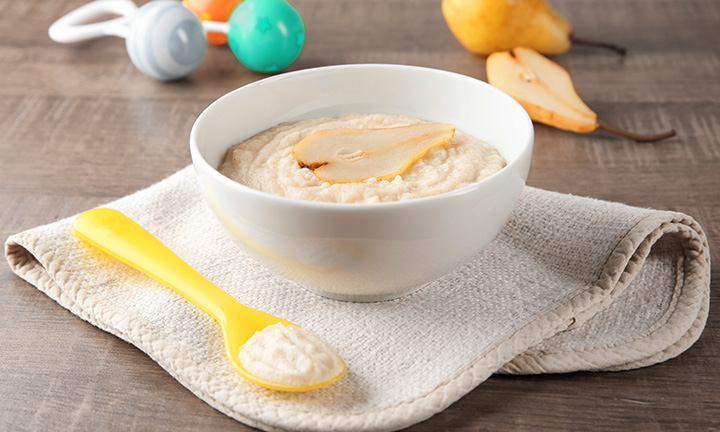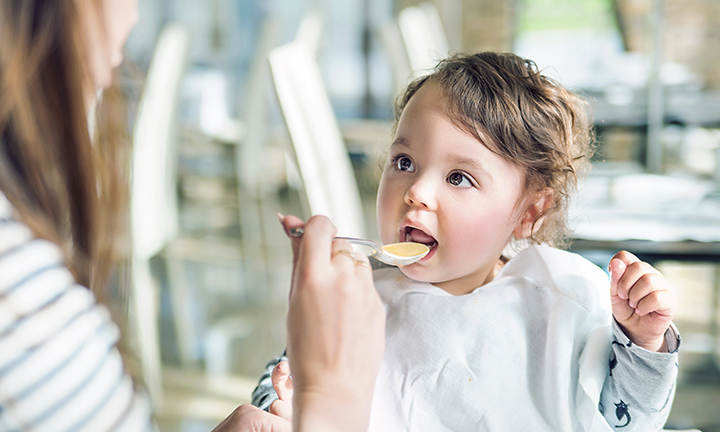
Weaning: When and How to Wean Your Baby?
Weaning your baby is an exciting milestone, but when and how to start is a common question. The NHS recommends beginning around 6 months, when most babies are ready for solid foods.
In this guide, you'll learn:
From weaning breastmilk to introducing solids, this article has everything you and your baby need for a smooth transition.
What Is Weaning?
When talking about babies, the definition of ‘weaning’ – also known as ‘complementary feeding’ – is giving solid foods alongside breast milk or formula.
The end of this process is when you’ll eventually stop breastfeeding or bottle feeding as your child completes the transition to solid food, although precisely when you stop breastfeeding altogether is a matter of personal choice.
Weaning a baby is usually a gradual process and not something that happens from one day to the next. In the early stages, the aim is to get your baby used to the idea of new feeding methods and tastes, as well as giving your body time to adjust to reduced nursing sessions if you’ve been breastfeeding.
Your little one needs time and practice to get the hang of all the skills involved in eating, such as chewing and moving food around inside their mouth.
While all this is going on – during the early stages of weaning at least – your baby will still be getting most of their energy and nutrients from breast milk or formula.
When to Start Weaning
You might be wondering when to wean a baby. Precisely when you decide to begin this exciting new phase in your baby’s development may differ, but experts agree that it’s best to wait until your little one is around 6 months old before you start introducing solid foods.
Here’s why experts recommend waiting until this point:
If your baby was born prematurely, consult with your health visitor or doctor about the best time to start introducing solid foods.
Watching how your baby grows and develops is an important and joyful part of parenthood. Keep track of your little one’s progress with our baby development articles.
Baby Development Milestones Taking care of your baby is one of the most important responsibilities as a parent. Track your little one's development with our articles! Go to Baby Development Milestones
Signs Your Baby Is Ready for Weaning
You may be wondering how you’ll be able to tell when your baby is ready to start weaning. Well, there are three important signs to look out for:
Some things babies normally do are often mistaken for signs of readiness. For example, keep in mind that chewing on a fist, periods of cluster feeding (wanting extra feeds of breast milk or formula) or waking up more often at night are not necessarily signs that your little one is ready to start trying solid food.
Tips on How to Wean Your Baby
If your baby shows signs of readiness to start weaning off breastmilk or formula, choose a time of day when your baby isn’t too tired, and make sure you’re not in a rush yourself either. Set aside plenty of time so your baby can go at their own pace without being rushed.
A good time for those early tasting sessions could be before a regular breast or bottle feed. Once that little tummy’s full of breast milk or formula, your baby might not be interested in trying solid food.
On the other hand, don’t wait for your little one to get too hungry, or those tasty morsels of mushed-up fruit or veg just won’t be able to compete with the prospect of an instant hunger-quenching feed of breast milk or formula.
To avoid the risk of choking, you must never leave your baby alone with food or allow them to eat unsupervised. Plus, ensure the bits of food are not a small size that could get caught in the throat or windpipe if swallowed whole, like whole grapes for example.
Here are some more specific baby-weaning tips for each stage of the process:
The First Taste of Solids – From Around 6 Months Old
Building an Appetite – 7 to 9 Months Old
Three Meals a Day – 10-12 Months Old
Your Little (Picky) Gourmet – 1 Year and Beyond
Baby-Led Weaning or Spoon Feeding?
There are two main methods for introducing solid foods. One is referred to as baby-led weaning. So, what is baby-led weaning? This is when you just give your baby finger foods – like pieces of boiled or steamed vegetables or soft fruit – and let your little one feed themself.
The other is spoon feeding, and as the name suggests, is when you spoon mashed or pureed foods into your baby’s mouth.
You might choose one or the other of these methods, or a combination of the two. Neither way is right or wrong, so go with whatever feels right for you and your child.
If you want to learn more about what baby-led weaning is, check out our dedicated article.
Breastfeeding Weaning Schedule
The weaning process is different for every baby, but a gradual transition can help ensure they receive the nutrition they need at each stage. The NHS recommends exclusively breastfeeding for the first six months. After this, solid foods should be introduced alongside continued breastfeeding.
If you decide to stop breastfeeding before 12 months, first infant formula should be used as a replacement. Whole cow’s milk or an unsweetened, fortified plant-based alternative (such as soya milk) should only be introduced after 12 months.
The chart below provides a simple guide to help navigate weaning your baby off breastmilk based on your child’s age.
What Are the Best Baby Weaning Foods?
Your little one’s first weaning foods could be single fruits or vegetables, either mashed up or cooked/steamed in pieces until they are soft (and cooled back down again).
Great first baby weaning foods include:
It’s usually OK to give your baby foods that contain allergens (such as peanuts, eggs, fish and glutenous products like bread) after 6 months of age, but always give only one of these foods at a time, and in a very small amount at first. That way, you’ll be able to spot any allergic reaction early. Signs of an allergic reaction can include sneezing, a runny or blocked nose, itchy, red, watery eyes, an itchy, red rash, wheezing, coughing, stomach pain, digestive issues such as constipation or diarrhoea, and worsening of asthma or eczema symptoms. Allergic reactions generally occur immediately after exposure to an allergen; however, some may develop after a few hours or days. If you notice any of these symptoms, contact your child’s GP.
In more rare and severe cases, Anaphylaxis can occur. Symptoms may include difficulty breathing and swelling of the face and lips. If you notice these symptoms, seek immediate medical attention by calling 999.
You can use cow’s milk in cooking (or mixed in with food) from about six months, but don’t give it to your baby as a standalone drink until they are at least 1 year old.
As your baby starts to get more nutrition from solid food, it’s important to make sure your little one is getting a balanced diet. As a general rule, try and include plenty of all these different types of food in their diet:
Shop-bought baby foods can be convenient, especially when you’re travelling with your baby, but nothing beats home cooking! Learn more about how to make and store your own baby food.
Times to Avoid Weaning Babies
You may want to delay weaning if:
When to Stop Breastfeeding
There’s no hard or fast rule for when to stop breastfeeding—it’s a personal choice.
The NHS recommends exclusively breastfeeding for around the first six months and continuing alongside solid foods for as long as both parent and baby are happy. If you stop before 12 months, first infant formula should replace breast milk, as cow’s milk is not suitable as a main drink before then.
Some parents phase out breastfeeding once their baby gets most of their nutrition from solid foods, while others continue into the second year or beyond. Both are perfectly fine. Breastfeeding is not just about nutrition—it can provide comfort, especially at night, during illness or when your child is feeling upset.
Sometimes, practical factors like returning to work, discomfort (such as sore nipples) or personal preference may influence your decision. If breastfeeding is uncomfortable, adjusting your baby's latch or feeding position may help. A health visitor or lactation consultant can offer support.
Try not to compare your journey to others. Every parent and baby is different, and the best time to stop breastfeeding is when it feels right for you and your little one.
How to Stop Breastfeeding
There is no single ‘right’ way to stop breastfeeding. Some babies naturally lose interest as solid foods become their main source of nutrition, while others may need a more structured transition.
Gradual weaning is recommended to help your body adjust and reduce the risk of discomfort or mastitis. It can also make the transition easier for your baby. A good approach is to:
If you need to stop breastfeeding quickly, expressing small amounts of milk can relieve engorgement without overstimulating the supply.
Symptoms and Challenges After Stopping Breastfeeding
Weaning can bring physical, hormonal and emotional changes for both you and your baby. A gradual approach can help ease the transition, but if you need to stop quickly, being aware of potential effects may help manage the process.
For You:
For Your Baby:
Gradual weaning is ideal, but if stopping quickly, offering comfort and patience can help ease the process. If you’re struggling with any aspect of stopping breastfeeding, reach out to your health visitor for guidance.
Taking Care of Yourself When Stopping Breastfeeding
Even if you phase out breastfeeding gradually, your breasts may still become overfull at times. To ease discomfort:
Emotionally, you may feel a mix of relief, sadness or anxiety. This is completely normal. Give yourself time to adjust, and if you’re struggling, speak to your health visitor, a lactation consultant or a breastfeeding support group.
Stopping breastfeeding is a significant change, but with patience and support, both you and your baby will adapt in a way that feels right for you.
FAQs at a Glance
There are no proven disadvantages to breastfeeding beyond one year. Many toddlers continue nursing for comfort and immune support. As long as both parent and child feel comfortable, extended breastfeeding is a healthy choice.
The Bottom Line
Introducing solid foods is a gradual process that can require plenty of patience and, if you’re breastfeeding, stopping when the time comes can also be an adjustment that takes a bit of getting used to for both you and your baby.
Try to keep in mind that weaning is an exciting time of exploration for your little one that can bring so many magical moments as your baby discovers and delights in new flavours and textures. Bon appétit!
If you haven’t already, download the Pampers Club app to receive exclusive rewards and discounts on all the nappy and baby wipes purchases you make for your little one.
How we wrote this article The information in this article is based on the expert advice found in trusted medical and government sources, such as the National Health Service (NHS). You can find a full list of sources used for this article below. The content on this page should not replace professional medical advice. Always consult medical professionals for full diagnosis and treatment.
Read more about Baby
Related Articles
Join Pampers Club and get:


